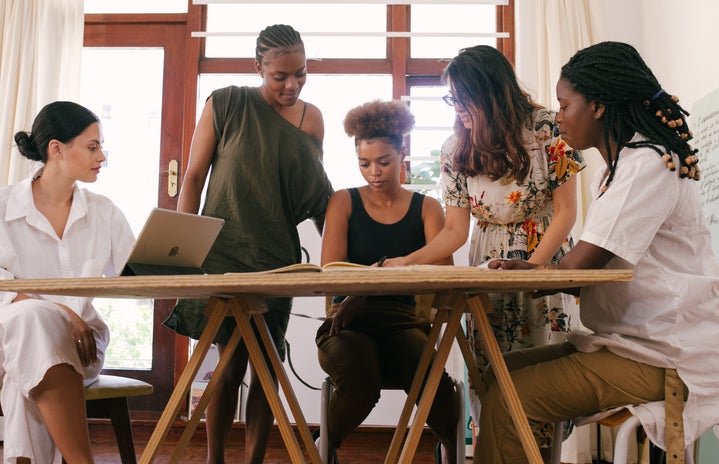Women’s History Month is a time when we as a society acknowledge the events that women have gone through historically, address societal issues regarding gender, and appreciate various female accomplishments. In terms of successful inventions, men are commonly associated with being the inventors and innovators of our society, and it has been this way throughout our country’s past. However, there have been numerous occasions where men have unfairly taken credit for the work and inventions of women during our history.
It is greatly important that these women are acknowledged in history books and other forms of media. Though it may seem like an issue of little importance today, research has shown that several factors contribute to gender differences in math and science achievement. The proper representation and acknowledgment of women who made important discoveries will likely improve the number of women who pursue these fields. Though the following women were not properly credited at the time of their work, it is essential that we, at least today, acknowledge these talented individuals for what was rightfully theirs.
Computer Programming
Despite being a largely male-dominated field today, the development of computer programming came with the work of a woman named Ada Lovelace, who discovered the computer’s ability to perform tasks when fed instructions. At the young age of 20, she collaborated with inventor Charles Babbage on an early version of the computer. While doing so, she made notes regarding what words and symbols could be used to communicate instructions to the computer. Her notes led to the development of complex algorithms and programming. However, her work has historically been diminished, as many historians did not believe she was capable of coming up with such discoveries. They looked to discredit her findings and credited her collaborator Babbage instead. However, the memoir of Babbage himself suggests that she deserves credit, and she has been recognized much more adequately in recent years, even being given a day to celebrate her accomplishments: “Ada Lovelace Day” on October 11th.
Cure for Leprosy
Before the 1940s, the most effective treatment for leprosy used an oil extract injectable in the body. This method impacted a huge amount of people at the time and was developed by Alice Augusta Ball, an African American chemist who worked at the University of Hawaii. At just 23 years of age, Ball used the oil of chaulmoogra tree seeds and created a technique that isolated ethyl ester compounds from the oil’s fatty acids. However, she died unexpectedly before publishing her findings, and a chemist named Arthur Dean published and took credit for her work. Credit was not given to Ball until a professor who had known about her work spoke up. Though her work went unrecognized for almost 90 years, she has been given more credit recently, having a day dedicated to her on February 29th and being named one of the most influential women in Hawaiian history.
Sex Chromosomes
Many of us learn the biological differences in sex very early on during middle and high school, but the question was fairly difficult for scientists about a century ago. The concept of sex chromosomes was discovered by a female scientist named Nettie Stevens. She experimented on germ cells and insects, eventually learning that the difference in sperm cells lies in one chromosome, as some carried larger variants while others carried smaller variants. She concluded that this chromosome, later named the Y chromosome, is what was responsible for the sex of the child. Despite her findings being strong, her ideas were not accepted by other scientists. Rather, the credit to this discovery was given to a male researcher named Edmund Wilson, who made a similar finding but whose work was not as accurate or strong in nature. She was not given credit for her work until long after her death.
Double Helix
The double helix is what many of us understand as the structure of a DNA molecule. The first discovery of the double helix was found by chemist and molecular biologist Rosalind Franklin. Franklin discovered two forms of DNA through x-ray diffraction photos and eventually found that both forms had two helices. Despite this being her finding, a colleague of hers named Maurice Wilkins showed her x-ray photos and unpublished research to Francis Crick and James Watson, who were currently working on their own DNA model. Without telling Franklin about seeing her materials, they used her work, took credit for her findings, and published their double-helix theory of DNA. Though Franklin published her work later, it was dismissed as confirming the work of Crick and Watson, and the discovery was not credited to her at all. They went on to receive the Nobel Peace Prize for the theory, and Watson eventually wrote a book crediting the discovery to him and his male colleagues, never giving credit to Franklin.
This has clearly been a repetitive occurrence throughout our country’s history. The discoveries listed above are merely a fraction of the many discoveries and ideas credited to men over the women responsible for them. Acknowledging our country’s history of discrediting women’s inventions, we must address this issue adequately and do what is possible to properly represent the achievements of women. This will not only be the morally fair thing to do, but it will help our society flourish and lead to the encouragement of more inventions from women in STEM going forward.



